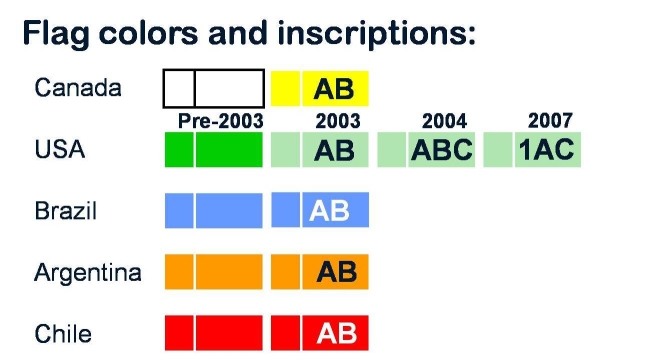band resighting techniques

The key goals in surveying shorebirds are to identify and record banded birds within each flock and count the total number of birds of each species that are present. This is important to determine the ratio of banded to unbanded birds, which can help determine overall population size and health.
There are TWO acceptable methods to determine ratio of banded to unbanded birds:
Method 1:
- Count the number of banded birds you see.
- Count or estimate the size of the flock by each species.
- Get as much data as possible from each banded bird.
- Again count the number of banded birds you see and average this number with your initial count.
Method 2:
- Begin counting each individual bird in a flock, by species.
- As you count, keep a running tally of total birds scanned and the number of banded birds. For example: 1, 2, 3, 4 (1 banded
bird), 5, 6, 7 (2nd banded bird) …
- Get as much data as possible from each banded bird.
Types of Bands
Birds have been marked as individuals for resighting in three different ways:
Flags with 2 or 3 characters (usually has a colored band or bands as well)
US Flags with 2 characters plus colored bands
Flags with no characters plus colored bands
Note: Birds have also been marked as cohorts (marks specify site and year to a group of birds)
Birds with Characters on the Flag:
Birds marked with flags that have characters are all marked as individuals. With one exception, all can be identified as individuals by the flag code alone. That exception is US Flags that have only 2 characters, see second photo from left. In this case, duplicate codes were used and the color band (usually there is only one and it is on the opposite leg) must be recorded as well as the flag code.

Flag/Band Position
The position that a band or flag has on the legs of a bird can be significant. The scheme used is as if you are looking at the bird from the rear:

Information to record for birds with 2 or 3 Character Flags:

Note: Use “—” to indicate that there were no bands at that position on the leg. Use “ “ to indicate that you do not know if there were any bands at that position on the leg. Use “m” to indicate a metal band. You could write this as follows: FL(XL)/-:O/M.
